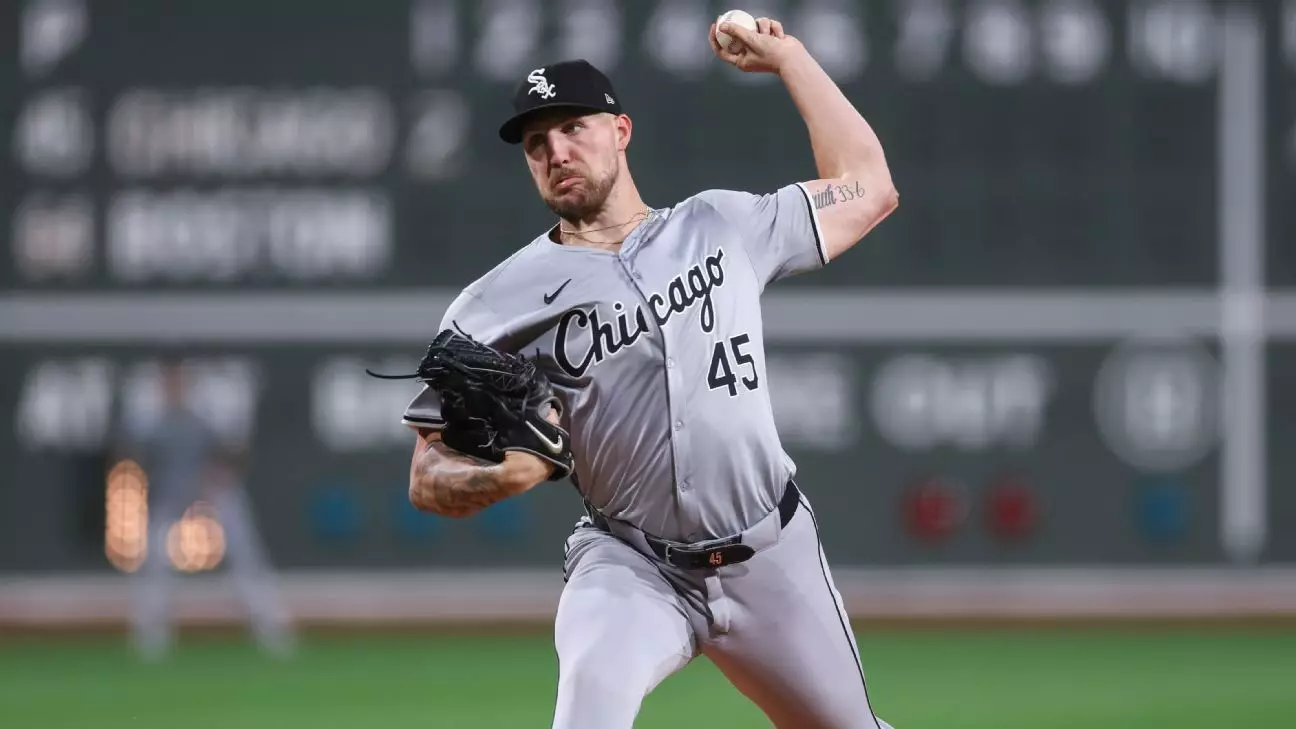The Boston Red Sox have had their share of pitching woes in recent years. As they look toward the 2025 season, the franchise acknowledges the necessity of adjusting their strategy to secure a competitive edge in an increasingly challenging division. With this in mind, discussions regarding a potential six-man rotation are underway—an innovation that many teams have considered but few have implemented successfully. The Red Sox’s chief baseball officer Craig Breslow recently shed light on this evolving approach, outlining the team’s ambitions and strategies for bolstering their pitching staff.
The Red Sox’s struggles with starting pitching were evident last season, particularly as the team dealt with losses of pivotal players such as Chris Sale and Lucas Giolito. Trading Sale to Atlanta not only relinquished a top-tier pitcher but also signaled a broader issue of depth within the pitching roster. Giolito’s unfortunate elbow injury further exacerbated these challenges, leaving the Red Sox painfully aware of the need for more reliable arms on the mound.
As the 2024 season progressed, the team found itself in a mid-season slump—one that deteriorated performance across the board, leaving the bullpen overextended and contributing to the club missing the playoffs for the third consecutive year. Recognizing these systemic failures is foundational to the team’s proactive adjustments. Breslow emphasized the importance of robust starting pitching, indicating that having an excess of quality arms, especially in the early season, could be a game changer.
Following an active offseason, the Red Sox have taken considerable steps to bolster their pitching staff by trading for Garrett Crochet and signing Patrick Sandoval and Walker Buehler. In emphasizing a six-man rotation, Breslow indicates the organization’s openness to experimenting with pitching depth—a strategy that can theoretically minimize injury risks and better manage the workload of starters.
Crochet, a left-handed pitcher who logged 32 starts with the Chicago White Sox, carries the potential to grow in a more supportive environment in Boston. His previous season, characterized by a 3.58 ERA amid a team plagued by losses, reflects resilience and the capacity for improvement. Similarly, Buehler’s postseason experience and ability to perform under pressure enhance the starting rotation’s credibility, despite a challenging regular season marred by injury recovery.
Sandoval, though recovering from significant elbow surgery, joins this new contingent of pitchers, contributing to a potential renaissance for the Red Sox’s rotation. Breslow’s optimism about Sandoval’s return in the second half of the season highlights the team’s forward-thinking mindset, as they plan for sustained competitiveness.
The emphasis on a six-man rotation plays into a broader narrative of securing depth within the roster. Breslow indicated an impressive treasury of starting options, totaling eight to ten players capable of taking the mound. This diversification not only presents flexibility in daily lineups but also offers reassurance against injuries that historically plague pitching staff.
This strategic depth is crucial, as a grueling season demands resilience and adaptability. Understanding the importance of a deep bench in pitching options can mean the difference between a playoff berth and another disappointing season.
While the pitching acquisitions have garnered attention, Breslow also knows that the team must address other components, such as balancing a lefty-heavy lineup and enhancing the bullpen—facets often overlooked amidst the excitement surrounding new pitching additions.
In addition to bolstering their pitching capabilities, the Red Sox face decisions regarding their young talent. Triston Casas, a promising 24-year-old first baseman, has become a focal point for potential trades, though Breslow clarified that the team is not actively shopping him. Maintaining young talent is crucial in ensuring the team can build for the future while remaining competitive in the present.
Further, the performance of players like Rafael Devers comes into question. With a history of errors, Devers’s defensive abilities have raised concerns, particularly with discussions surrounding positional adjustments. Breslow remains committed to Devers as the team’s third baseman, emphasizing a need for creativity in constructing the most effective roster.
As the Boston Red Sox prepare for the 2025 season, they stand at a crossroads marked by opportunity and challenge. The proposed six-man rotation could usher in a new era of stability for a franchise aiming to reclaim its status in Major League Baseball. With Breslow at the helm, the Red Sox are poised to embrace a future driven by strategic depth, youthful vigor, and an unwavering commitment to excellence on the diamond.

